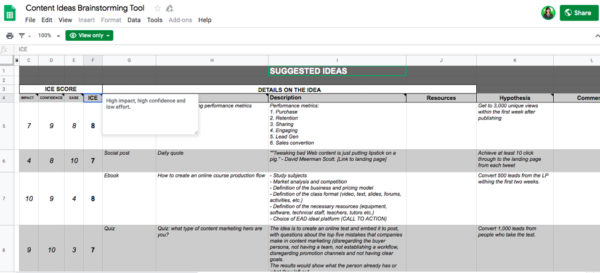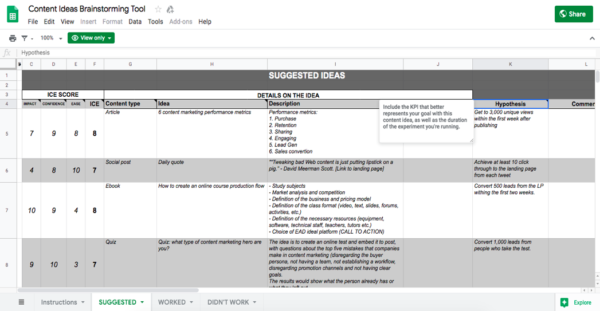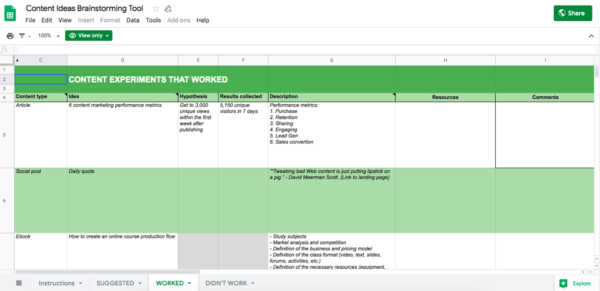 Two years ago Coca-Cola scrapped its CMO role in favor of a chief growth officer, following the move by other Fortune 100 companies like Hershey’s and Kellogg.
Two years ago Coca-Cola scrapped its CMO role in favor of a chief growth officer, following the move by other Fortune 100 companies like Hershey’s and Kellogg.
More recently, McDonald’s extinguished the role of CMO and created two new senior vice president positions – marketing and marketing tech.
These growth-focused, highly data-driven, high-impact roles and the teams they work with are becoming essential in a company’s operational hierarchy, from IBM and Microsoft to Capital One. They are driving millions of dollars in revenue at a faster pace powered by growth methodology.
As Sean Ellis, who coined the term “growth hacker,” explains in Hacking Growth, the core components of growth include:
- Creation of a cross-functional team and breaking down the traditional silos of marketing and product development
- Qualitative research and quantitative analysis to gain deep insights into user behavior
- Rapid generation and testing of ideas followed by rigorous data analysis to act on the results
Growth teams often include content creation and promotion in their acquisition, activation, and retention actions. But how can content teams integrate the growth mindset in their daily routine? It starts with an experimental mindset.
How do #content teams integrate a growth mindset? It starts with experimentation. @emilia_chagas Click To Tweet
Now, let’s go through two options to address the opportunities whether your brand has a growth team or not.
If your company hasn’t established a growth team
Start by running more data-oriented meetings with your content team. For every idea discussed, ask:
- How does this piece of content contribute to the company’s bottom-line goal?
- What impact will it have? How easy will it be to do? How confident are we that we can get there?
- What quantifiable goal (i.e., views, visits, leads, shares, opportunities) should we expect in the first two weeks?
Other growth-focused practices for these content meetings include:
- Start each meeting going through the results from the latest content projects.
- Revisit every piece of content or experiment to identify the successful (worked) or unsuccessful (didn’t work) ideas. Input the data into a learning database for the team to use when it’s time to plan the editorial calendar for the following month, quarter, or year.
- Add a content topic on the editorial calendar only when a hypothesis exists. Every content idea must be attached to a KPI and goal.
- Conclude each meeting by setting the tasks for the next week or fortnight, prioritizing the ones you feel most confident about or that promise to bring the higher impact.
You also can involve people from product marketing and other team members in the content meetings. Share your team’s idea pipeline spreadsheet so they can add their ideas prior to the meeting. Invite them to attend and give input at your meetings.
HANDPICKED RELATED CONTENT:
If your company has a growth team
As a member of the content team, follow a few growth practices to improve results for both reach and conversion with every content piece you plan and create:
- Attend growth meetings and pitch your ideas. Depending on the growth team size or duration of their experiments, these meetings usually happen every week or two. Most begin with an analysis of what was learned over previous sprints. The team moves on to reiterate findings while planning next steps.
- Know the North Star Metric (NSM) and objectives followed by your growth team. The NSM is the single metric that best captures the core value delivered by your products or services to customers. For example, Facebook’s NSM is daily active users. The team optimizes everybody’s feed to deliver more value to them. And Airbnb’s North Star Metric is number of nights booked. This metric captures value to both guests and hosts. For the same reason, Uber’s NSM is the number of rides per week. Optimizing efforts to grow this metric is key to driving sustainable growth across a customer base.
- Suggest ideas and prioritize your content creation according to high impact, high confidence, and low effort, also known as the ICE score.
The North Star Metric best captures the core value delivered by your brand to your customers. @emilia_chagas Click To Tweet
Ask your growth team if they use software to organize their routine – growth meetings, idea prioritization, automated data input and analysis, learning registering, etc.
If it does, request access and add your content ideas to it. If it doesn’t, use a spreadsheet for the same purpose.
If your company doesn’t have growth software, use this process
Use the downloadable spreadsheet (or create your own).

Pre-publication process
Go to the first worksheet to add ideas for new content suggestions by the team. Flesh it out with a description and identify the resources needed to accomplish it. Sounds like something you’re already doing? Good. (If not, no worries. Start now.)
When adding new ideas include columns to assess your ICE score – the growth element. Score each idea between zero and 10 based on its impact, confidence in achieving it, and how easy it will be to do. The next column adds those three scores and divides by three to calculate the ICE score.
Click to enlarge
The higher the ICE score, the more important it will be to give the content idea high priority.
As you do this analysis, add the hypothesis behind each idea/experiment. The hypothesis should include the expected metric(s) for the KPI and the time frame to hit that number.
Make sure every #content experiment has a hypothesis that includes a metric & time frame. @emilia_chagas Click To Tweet
TIP: Pick the shortest realistic time frame in which to achieve your experiment’s metric.
Click to enlarge
Post-publication steps
Once a content idea is executed, it’s time to analyze and rate the results.
You can use two new worksheets – worked and didn’t work – and transfer the results.
Or you can expand the columns on the primary worksheet to add a column for results. Highlight an idea that achieved its hypothesis in green. Highlight an idea that didn’t achieve its hypothesis in a light red (so you can still read the text).
Now you can see what content ideas worked (and you should pursue into full-fledged projects) and which content ideas didn’t work (and should be dismissed or revised).
Click to enlarge
Go for growth
As you implement a growth mentality and process for your content marketing, here are a few more lessons gathered from the most efficient growth teams all over the globe:
- Dig deeper into marketing data. Seventy-five percent of companies never extract the full value from their data, according to a PwC and Iron Mountain survey. If your content team is stretched, ask the growth team to help.
- Run small experiments. Chances are many will fail, but the one that does succeed will pay itself off many times over.
- Learn to be hyper efficient. Focus on finding new ways to implement existing resources.
- Adapt to your consumers’ buying habits. Your prospects never act the same from one moment to the next, learn which direction they are headed and move with them.
- Create statements behind every hypothesis as the team adapts to the methodology. Use these examples for inspiration:
- We believe using comments on blog posts as potential ideas for content can help increase the number of views to x.
- We believe changing the color of the landing page from red to blue can yield x more conversions.
- We think reducing the number of social media posts from 15 to 10 can increase engagement by x%.
- We feel that shorter email subject lines can increase open rates by x%.
- We believe that shorter email text lines can increase CTR rates by x%.
Now, take some or all of these ideas and begin to assemble the right and consistent content growth team for your company’s continuous growth and success.
Get help for your growth mindset every weekday. Subscribe to CMI’s free newsletter with tips, trends, and other valuable info for your content marketing.
Cover image by Joseph Kalinowski/Content Marketing Institute



